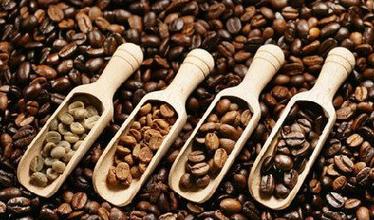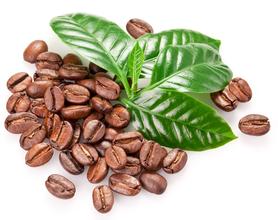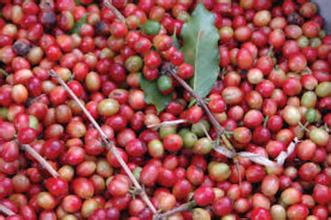Espresso beans: what are coffee beans? What kind of matching is good?

What is matching?
Since it is matching, it naturally refers to the blending of more than two kinds of raw beans, but it can also match the same kind of coffee beans with different roasting degrees, or even the new crop and aged coffee or old crop of the same kind of coffee beans, so the type referred to in the blending is no longer a narrow coffee variety, but extends to the flavor of coffee in a broad sense. Generally use 2 to 6 kinds of coffee beans when blending, too many kinds will not be able to show the unique flavor of coffee.
Blended coffee usually does not take the 1:1 blending ratio, because this may suppress each other's unique flavor, so the blending must be primary and secondary in order to produce a better taste than a single coffee. If you want the coffee to taste complex and changeable, you can reduce the proportion of raw beans, and vice versa.
Coffee blending depends on constantly trying cup testing, so a blending schedule should be drawn up mathematically before blending, and then the best plan should be determined through the process of blending-cup testing.
Don't think that this is a thing that doesn't keep up with the times or without the support of science and technology. in fact, you can make a good cup of coffee only through the experience, inspiration and tireless attempt of the mixer.
Why match it?
Although some fixed varieties of coffee can be drunk directly as individual coffee, most of the coffee has more or less defects in flavor. For example, there is no special flavor, lack of depth, not strong enough, or a certain taste is too strong. In order to make up for these deficiencies, it is necessary to combine several kinds of coffee beans with different characteristics to create a harmonious and deep flavor.
In addition to flavor considerations, there are many commercial considerations, such as creating a brand.
In 1870, Joel, a grocery store salesman from Kentucky and the founder of Maxwell, felt that the coffee did not meet his requirements, so he began to try to mix different coffee beans. When he came up with a taste to his satisfaction, he took it to the prestigious Maxwell Hotel in Tennessee. This is a hotel with the traditional characteristics of hospitality in the American South. Before long, Joel's coffee, with its unique flavor, became the most popular product at the Maxwell Hotel, and the coffee roaster here became the largest in the United States. As a result, the Maxwell Hotel gave its elegant and unique name to Joel's coffee.
Highlighting the good flavor and eliminating the bad things will also be the purpose of blending, want a more balanced cup of coffee, want a cup of acidity, strong mellow thickness and great plum fruit aroma and great fat? That matching must be a shortcut, for the business operation of such a high cost and difficult to find.
A good name will add a lot of points to the match, making it easier to create selling points such as the "black cat" match of "intellectuals" and the "curlers" of "Tree Pier City" are all successful examples.
How do you match it?
Blending coffee is not a random mix of coffee beans. Sometimes the blending of two kinds of boutique coffee will suppress each other's unique flavor; the blending is not just to combine several kinds of boutique coffee together, it is like the painter in the color palette to adjust and produce charming colors. There is a misunderstanding, is to ask this secret recipe, in fact, there is no secret recipe. The secret of coffee blending is not the secret that Coca-Cola locks in the bank safe. Matching is based on the flavor to choose beans, Green buyer, Roaster, Blender work together to create a popular mix, none of them are indispensable.
First of all, raw bean buyers want to buy raw beans with the right price and flavor for the company, so they have been testing the cup to find those flavors, such as:
Sour
Mocha, Hawaii Kona, Kenya, Mexico, Guatemala, Costa Rica SHB, Gillimanjaro, Colombia, Delvado, Western Hemisphere washing high quality new beans and so on.
Bitter
Java, Mantenin, Bogota, Congo, Uganda, etc.
Gan
Colombia, Venezuela (aged coffee), Blue Mountains, Gillimanjaro, Mocha, Guatemala, Mexico, Kenya, Santos, Brazil, Haiti, etc.
Alcohol
Colombia, Mocha, Blue Mountains, Guatemala, Costa Rica, etc.
Neutral
Brazil, Cervado, low real estate Costa Rica, Venezuela, Honduras, Cuba and so on.
The above acid, bitter, glycol, alcohol and neutral are for reference only, because there are too many factors affecting flavor performance (variety, altitude, light, moisture, fertilizer, shade tree, etc.).
The bakers tried to bake to find out the best taste of the bean by cup test.
The assemblers match it with their experience and then test it to find out what the customer wants.
Source:
The blog of Mavericks Coffee
Important Notice :
前街咖啡 FrontStreet Coffee has moved to new addredd:
FrontStreet Coffee Address: 315,Donghua East Road,GuangZhou
Tel:020 38364473
- Prev

Boutique coffee beans: coffee genealogy (variety knowledge popularization post) basic knowledge of coffee introduction
From Ethiopia to East Africa, coffee varieties have experienced about 1300 years of development and evolution. Experienced Yemen, India, Java, the Netherlands, Paris, Bourbon, Martinique Island, Haiti, Mexico, Brazil and other Central and South American countries. Coffee is an evergreen shrub of the genus Rubiaceae of Gentianaceae. The general classification of coffee is: Arabica iron.
- Next

Fine coffee beans: Papua New Guinea Chimair Estate round beans
Papua New Guinea Chimair Estate Round Beans Details: 1. Country: Papua New Guinea 2. Grade: Grade A 3. Origin: Wiki Valley 4. Elevation: 1500 m 5. Treatment: Washing 6. Variety: Arusha, Blue Mountain, Catimor 7. Producer: Chimair Estate 8. Flavor: Nutty, Sucrose, Low Acid Solid Papua New Guinea Located in Indonesia
Related
- Guji coffee producing area of Guji, Ethiopia: Humbela, Shakiso, Wulaga
- What is the most expensive variety of Qiloso in BOP multi-variety group?
- How to store the coffee beans bought home?
- Why are Yemeni coffee beans so rare now?
- Ethiopian Sidamo all Red Fruit Sun Sun Santa Vini Coffee beans
- SOE is mostly sour? What does it mean? Is it a single bean? what's the difference between it and Italian blending?
- Is Italian coffee beans suitable for making hand-brewed coffee?
- How to choose coffee beans when making cold coffee? What kind of coffee beans are suitable for making cold coffee?
- Just entered the pit to make coffee, what kind of coffee beans should be chosen?
- Can only Japan buy real Blue Mountain Coffee? What are authentic Jamaican Blue Mountain coffee beans?

